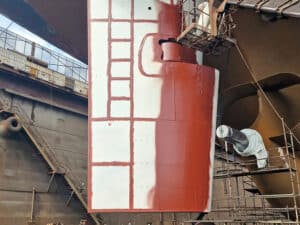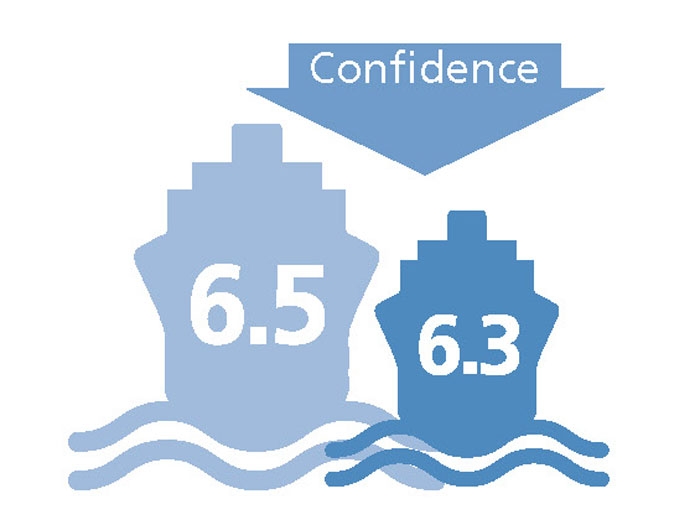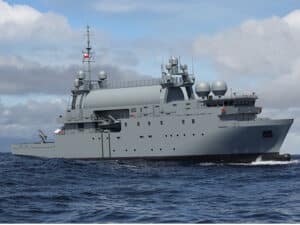
Shipping confidence dips a little
Written by Nick Blenkey
JUNE 30, 2014 — Overall confidence levels in the shipping industry fell slightly during the three-month period to May 2014 but remain at their second-highest level for the past six years. The latest Shipping Confidence Survey from international accountant and shipping adviser Moore Stephens shows that xpectations of new investment were maintained over the three-month period, but the prospect for higher freight rates softened in the tanker and dry bulk sectors.
Uncertainty over the likely effect of an increase in private equity funding, and its potential impact on tonnage supply dominated the thoughts of respondents to the survey.
In May 2014, the average confidence level expressed by respondents in the markets in which they operate was 6.3 on a scale of 1 (low) to 10 (high), compared to the 6.5 recorded in February 2014, which was the highest figure since the 6.8 recorded when the survey was launched in May 2008.
Ship managers (up from 6.4 in the previous survey to 6.5 this time) were the only category of main respondent to report an increase in confidence. Owners (down from 6.6 to 6.1), charterers (down from 6.5 to 6.1) and brokers (down from 6.4 to 6.0) were less confident than they were three months previously.
Geographically, confidence was stable in Asia at 6.4, but down in Europe (from 6.4 to 6.2) and in North America (from 7.1 to 6.5).
The likelihood of respondents making a major investment or significant development over the next twelve months was unchanged on the previous survey, on a scale of 1 to 10, at 5.8, which equals the highest figure since the rating of 6.0 recorded in August 2010. The figure for managers was up on last time, from 6.0 to 6.2, and for charterers, from 6.3 to 6.4. But owners were slightly down on last time, from 5.9 to 5.8, as were brokers, from 5.4 to 5.2.
Sixty-eight percent percent of charterers (up from 50 percent last time) rated the likelihood of making a new investment over the next twelve months at 7.0 out of 10.0 or higher. The numbers of owners and managers of like mind were 43 percent and 56 percent respectively, up on the corresponding figures of 47 percent and 43 percent last time.
Geographically, expectation levels of major investments were up in Asia, from 5.7 to 5.9 (the highest figure for four years), but down in Europe, from 5.8 to 5.7. Meanwhile, there was an increase, from 5.1 to 5.9, in North America, where 62 percent of respondents rated the likelihood of making a new investment over the next twelve months at 7.0 out of 10.0 or higher.
One respondent said, “Recent new investment in over-built shipping asset classes represents a threat to shipping,” while another noted, “Potential buyers are finding it difficult to secure loans to buy ships.”
Demand trends, competition and finance costs once again featured as the top three factors cited by respondents overall as those likely to influence performance most significantly over the coming twelve months. The overall number for demand trends was up by 2 percentage points to 23 percent, while competition was up by one percentage point to 20 percent. Meanwhile, the number of respondents citing finance costs fell from 16 percent to 15 percent. Tonnage supply (unchanged at 13 percent) featured in fourth place, while operating costs (down from 11 percent to 10 percent) and fuel costs (up one percentage point to 10 percent) featured in equal fifth place.
Demand trends, up 5 percentage points to 27 percent, remained the number one performance-affecting factor for owners. Finance costs, down 3 percentage point to 15 percent, were replaced in second position by tonnage supply, unchanged at 17 percent. For managers, meanwhile, competition (up 2 percentage points to 21 percent) remained in first place. Operating costs, down 2 percentage points to 14 percent, dropped to third place behind finance costs, unchanged at 15 percent. For charterers, demand trends, up from 22 percent to 30 percent, featured in first place, ahead of competition (21 percent) and finance costs (16 percent).
Geographically, demand trends were the most significant factor for respondents in Asia (up from 20 percent to 22 percent), Europe (up 2 percentage points to 24 percent) and North America (down from 24 percent to 21 percent). Competition was the second most significant performance-affecting factor in Asia (down one percentage point to 19 percent), Europe (up from 18 percent to 19 percent), and North America (down from 23 percent to 17 percent). In Asia and North America, finance costs featured in third place, while for Europe that slot was occupied by tonnage supply.
The number of respondents overall who expected finance costs to increase over the next twelve months was unchanged at 41 percent. The number of respondents expecting finance costs to come down, meanwhile, rose from 6 percent to 13 percent, the highest figure since August 2010. Managers were the only main category to record a fall in the numbers of respondents expecting higher finance costs (down from 42 percent to 39 percent). The figure for owners was up from 38 percent to 42 percent, for brokers from 39 percent to 50 percent, and for charterers from 35 percent to 48 percent.
The number of respondents in Asia anticipating an increase in the cost of finance was up by 8 percentage points to 56 percent, while in Europe the numbers were down from 37 percent to 34 percent. In North America, meanwhile, the numbers anticipating higher finance costs rose from 29 percent to 62 percent.
“The banks need to change their policy,” said one respondent. “They have to support shipping, the biggest transport industry in the world, and lend against secondhand assets.” Another observed, “There is a lack of belief in the banking system.”
Turning to the freight markets, there was a fall in the number of respondents anticipating higher rates in the tanker and dry bulk trades, while expectations in the container ship sector remained unchanged from last time.
The number of respondents overall who expressed an expectation of higher rates in the tanker sector over the next twelve months was down by 2 percentage points to 41 percent, which is nevertheless the second-highest figure since May 2011. Charterers recorded a 29 percent fall in this regard, from 50 percent to 21 percent, while owners’ expectations were also down, from 42 percent to 37 percent. Brokers and managers, meanwhile, were more confident, their expectations of higher tanker rates increasing by 12 and 3 percentage points respectively to figures of 48 percent and 46 percent.
Geographically, the prospects for increased tanker rates were deemed lower this time by respondents in Asia (down from 43 percent to 40 percent), and in Europe (down from 43 percent to 41 percent). In North America, however, there was a 29 percentage-point increase to 50 percent.
In the dry bulk sector, meanwhile, there was a 5 percentage-point fall, to 53 percent, in the overall numbers of those anticipating rate increases. Just 42 percent of charterers, compared to the survey high of 76 percent last time, thought that rates would increase over the coming year. The numbers for owners were also down (from 59 percent to 57), as were those for managers (from 57 percent to 45 percent) and brokers (from 62 percent to 59 percent. Expectations of higher dry bulk rates over the next twelve months were unchanged in Asia at 49 percent, down in Europe from 64 percent to 55 percent, but up in North America from 47 percent to 64 percent.
In the containership market, meanwhile, the number of respondents expecting rates to increase over the coming twelve months was unchanged at 34 percent. All main categories of respondent, with the exception of charterers, were more confident of rate increases this time than they were three months ago, with owners up from 34 percent to 36 percent, managers up from 33 percent to 35 percent, and brokers from 36 percent to 41 percent. For charterers, however, the figure was down from 50 percent to 46 percent.
Geographically, expectations of improved containership rates were unchanged at 38 percent in Asia, and up in Europe (from 31 percent to 32 percent) and in North America (from 27 percent to 30 percent).
Moore Stephens shipping partner, Richard Greiner, says, “The small dip in confidence revealed by the latest survey is a disappointment. But it has to be viewed in context. Confidence is still at its second-highest level for four years, and the number of respondents planning to make a major investment over the next twelve months is as high as it has been at any time since August 2010. It is difficult to think of another industry, similarly exposed to political, commercial, economic and environmental pressures, which has retained the confidence of its customers and investors to the same degree.
“Ironically, it is the willingness of investors – and new investors, at that – to put their money into shipping which may lie behind the recent small dip in confidence. Private equity funding dominated the comments of respondents to an extent seldom seen in connection with any other issue during the six-year life of the survey to date. Many see the growth of private equity finance in shipping as a threat to longer-term viability. It is true that this type of funding is likely to be short-term by shipping industry standards, and shipping is an industry which best rewards long-term investors. But, in the absence of sufficient bank funding of the type which has been the traditional mainstay of shipping finance over the years, other options are required to bridge the gap.”






Leave a Reply
You must be logged in to post a comment.